General Hours of Operation
Monday - Friday from 9 a.m. to 4:30 p.m.
Saturdays 10:00 a.m.-4:00 p.m.
The cave is not open to the public.
Welcome to the Missouri Institute of Natural Science museum
museum is run by volunteers so please call ahead to make sure are open.
Admission is free
Phone: 417-883-0594
Rocks Elements Minerals and Crystals
Rocks go through cycles

Types of rocks
Sedimentary
Sedimentary rocks are formed by sediment that is deposited over time, usually as layers at the bottom of lakes and oceans. This sediment can include minerals, small pieces of plants and other organic matter. The sediment is compressed over a long period of time before consolidating into solid layers of rock. Sedimentary rocks form layers called strata which can often be seen in exposed cliffs.

Sedimentary rocks cover the majority of the Earth's rocky surface but only make up a small percentage of the Earth’s crust compared to metamorphic and igneous types of rocks. Some examples of sedimentary rocks include limestone, sandstone, mudstone, greywacke, chalk, coal, claystone and flint.
- Limestone forms the metamorphic rock marble when subjected to extreme heat and pressure over time (metamorphism).
- Sandstone forms the metamorphic rock quartzite.
- Mudstone forms the metamorphic rock slate.
- Chalk is a soft, white form of limestone.
- Flint is a hard, sedimentary form of the mineral quartz
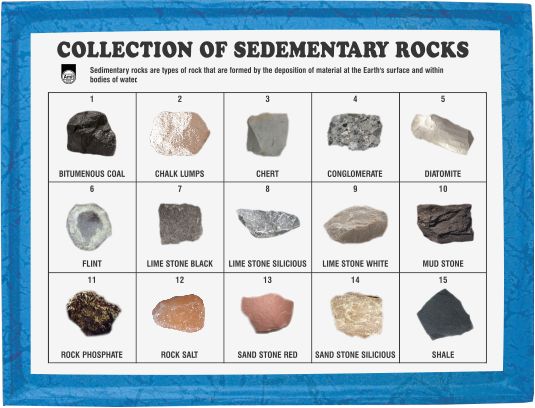
Metamorphic
Metamorphic rocks have been changed over time due in part from extreme pressure and heat. Metamorphic rocks can be formed by pressure deep under the Earth's surface, from the extreme heat caused by magma or by the intense collisions and friction of tectonic plates. Tectonic uplifts and erosion help bring metamorphic rock to the Earth's surface. Some examples of metamorphic rocks include anthracite, quartzite, marble, slate, granulite, gneiss and schist.
- Anthracite is a type of coal with a high carbon count, few impurities and with a high luster.
- Marble is a metamorphic rock that is formed from the sedimentary rock limestone.
- Quartzite is a metamorphic rock that is formed from the sedimentary rock sandstone.
- Slate is a metamorphic rock that is formed from the sedimentary rock mudstone.
- Granulite is a metamorphic rock that is formed from the igneous rock basalt.
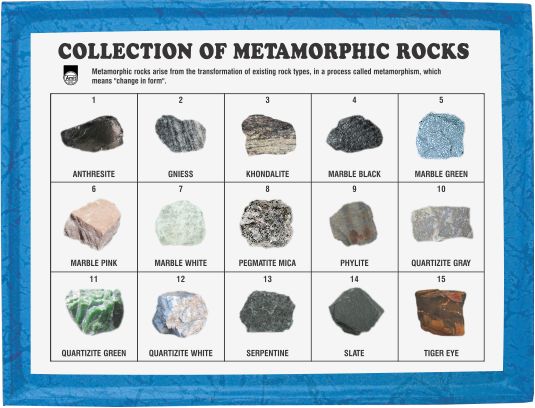
Igneous
Igneous rock is formed when magma cools and solidifies; it may do this above or below the Earth's surface. Magma can be forced into rocks, blown out in volcanic explosions or forced to the surface as lava. The atoms and molecules of melted minerals are what make up magma. These atoms and molecule rearrange themselves into mineral grains as the magma cools, forming rock as the mineral grains grow together. There are over 700 different types of igneous rocks. The upper section of the earth’s crust is made up of around 95% igneous rock. Examples of igneous rocks include basalt, granite, pumice, obsidian, tuff, diorite, gabbro and andesite.
- Basalt forms the metamorphic rock granulite when subjected to extreme heat and pressure over time (metamorphism).
- Granite is a common rock that contains at least 25% quartz and is sometimes used in construction because of its strength.
- Pumice is an unusual, lightweight rock formed when molten rock is rapidly blown out of a volcano, forming bubbles as it quickly loses pressure and cools at the same time.
- Obsidian is a volcanic glass that forms quickly without crystal growth; it can have very sharp edges making it useful as a cutting tool or arrowhead.
- Tuff is a rock formed from volcanic ash.

Minerals
The mineral feldspar is the most common rock-forming mineral (about 60% of the earth’s crust) Feldspar is a common name that applies to a group of minerals with a general chemical formula of x Al(Al,Si)3O8, where x can be sodium (Na) and/or calcium (Ca) and/or potassium (K). Feldspar occurs in igneous, metamorphic and sedimentary rocks.
Fluorite is an important industrial mineral composed of calcium and fluorine (CaF2). It is used in a wide variety of chemical, metallurgical and ceramic processes. Specimens with exceptional diaphaneity and color are cut into gems or used to make ornamental objects.
Fluorite is deposited in veins by hydrothermal processes. In these rocks it often occurs as a gangue mineral associated with metallic ores. Fluorite is also found in the fractures and cavities of some limestones and dolomites. It is a very common rock-forming mineral found in many parts of the world.
Galena is a lead sulfide mineral with a chemical composition of PbS. It is the world's primary ore of lead and is mined from a large number of deposits in many countries. It is found in igneous and metamorphic rocks in medium- to low-temperature hydrothermal veins. In sedimentary rocks it occurs as veins.
Ore minerals
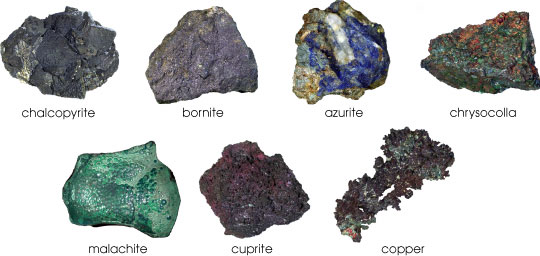
Earthy minerals
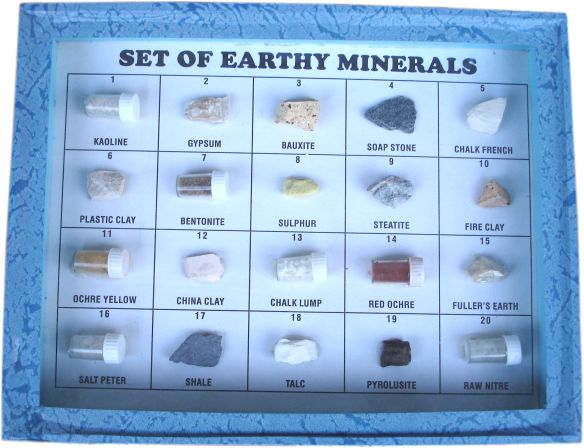
Rock forming Minerals

Other minerals

Galena

Minerals used in industries
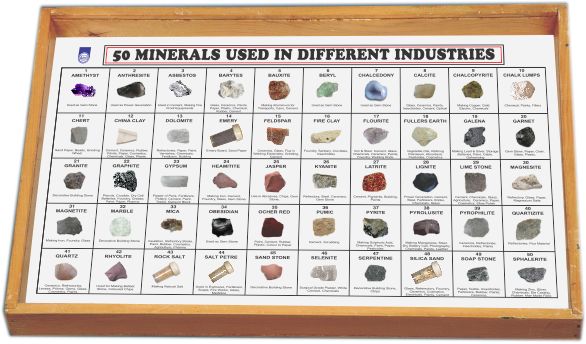
Crystals and gems
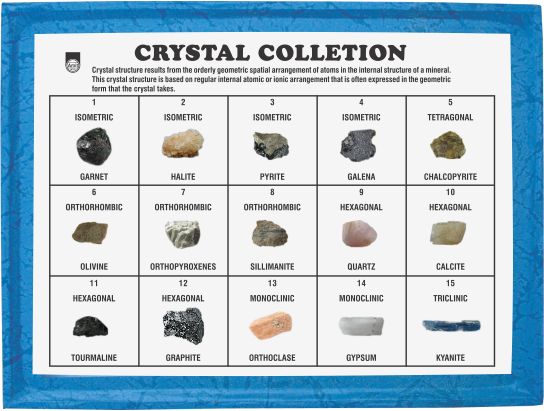
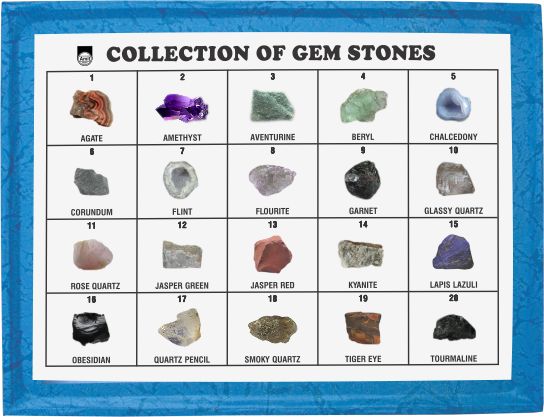
**Logging requirements**
DO NOT POST ANSWERS IN YOUR LOG.
Send the following answers to me via message
- Find the sign on the display case titled "Scale of Hardness" Pick one and tell me the color, and everything for it listed in the it's row on the harness scale.
| I have earned GSA's highest level: |
   |